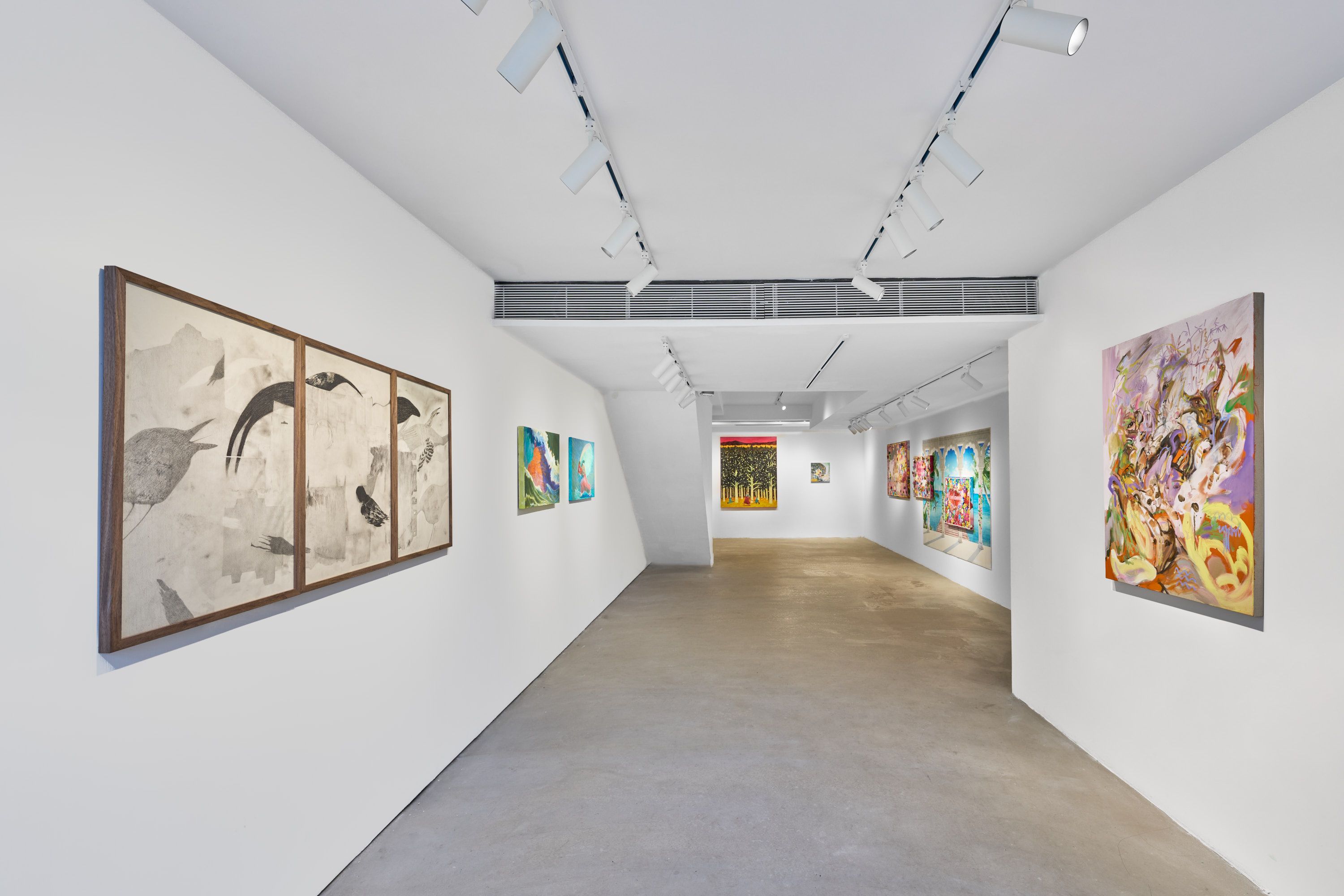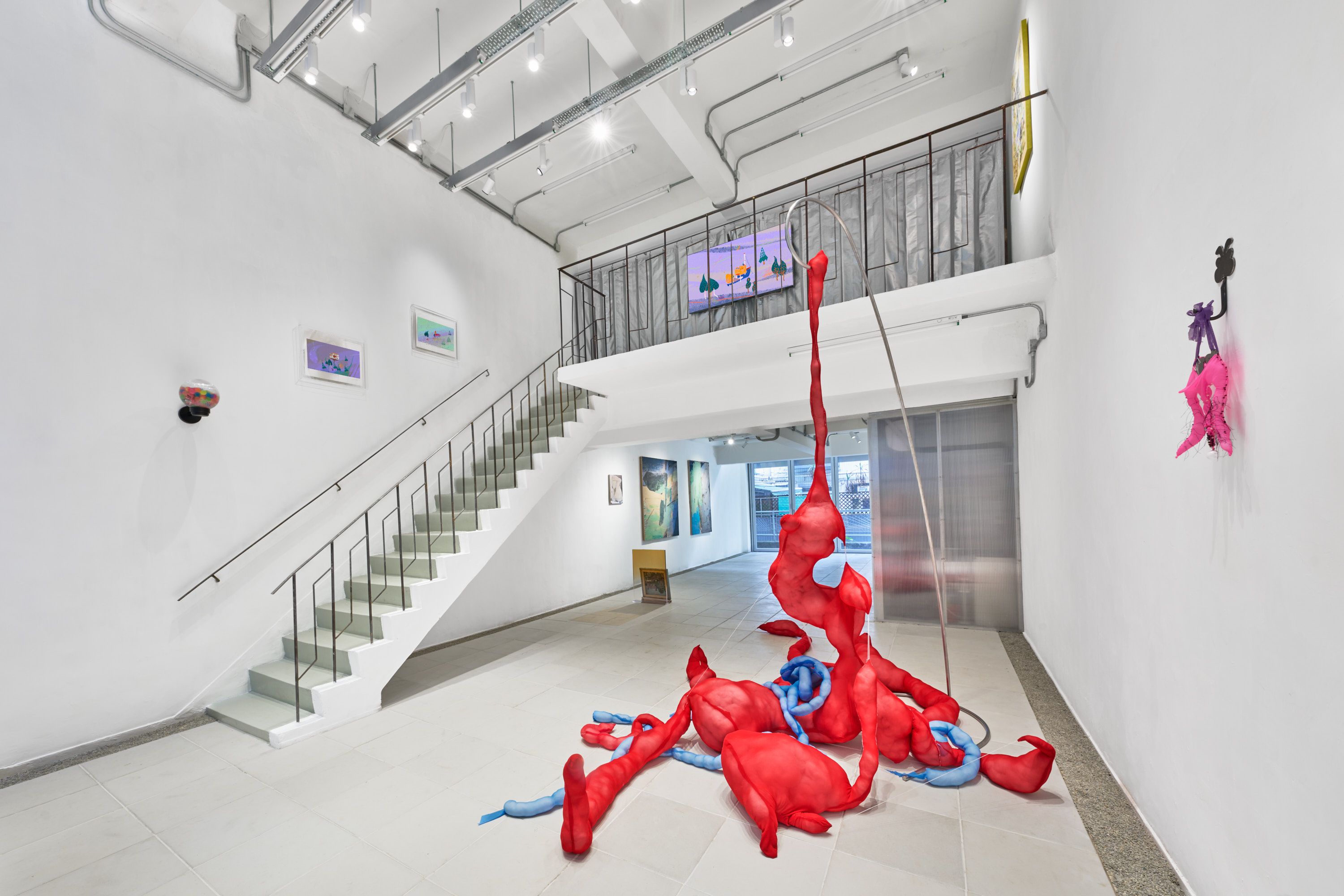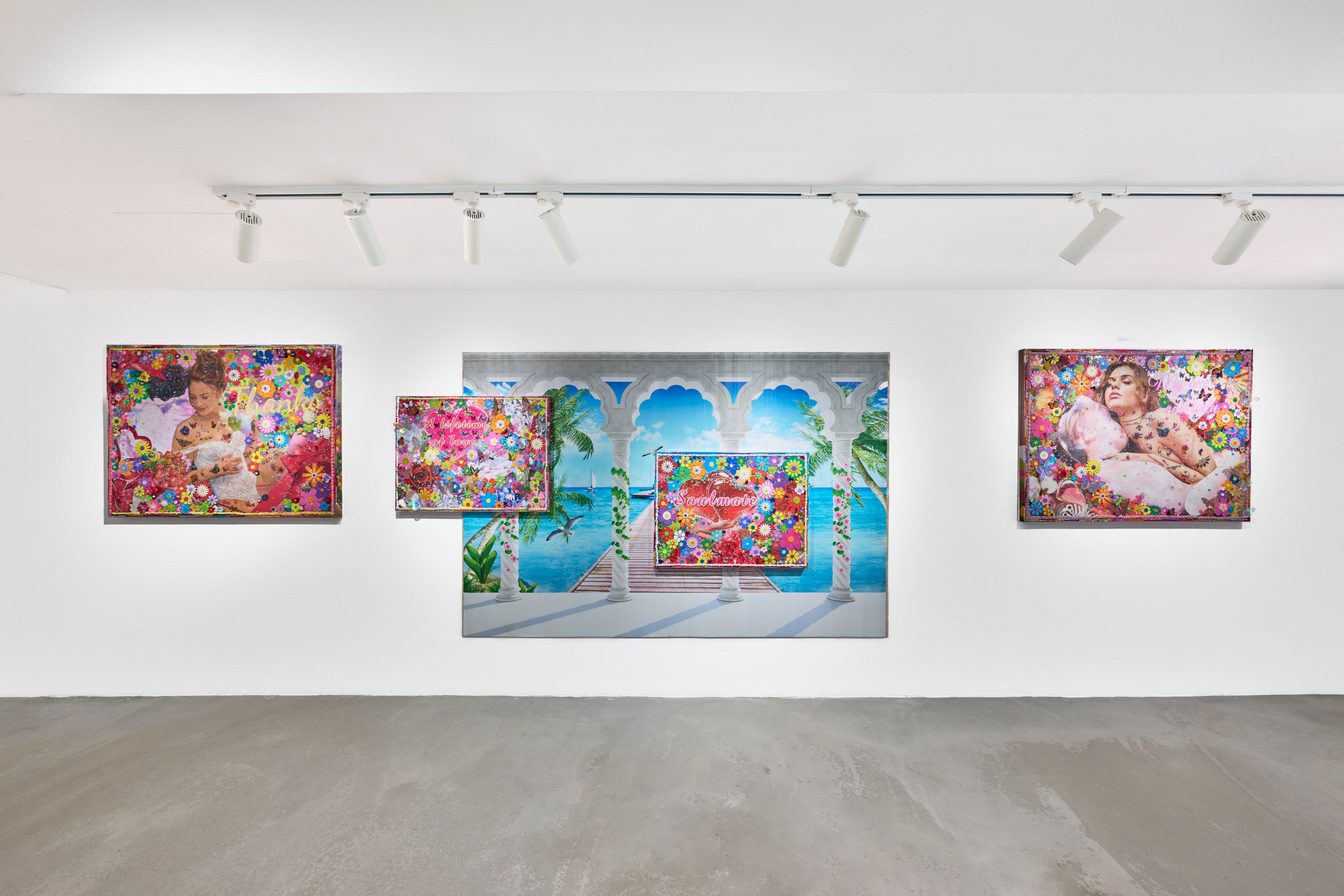Shows
Navigating a “Fluid Maze” at WOAW Gallery


Feb 6–Mar 13
“Fluid Maze”
WOAW Gallery
Hong Kong
Exploring the often-discussed themes of memory and identity, a group show of eight Hong Kong-based artists at WOAW Gallery in Hong Kong, “Fluid Maze,” offered fresh perspectives. As suggested by the title, “Fluid Maze” sought to complicate how visitors typically approach and engage with artworks—namely, audiences’ insistence on uncovering a singular, hidden meaning. With 30 works spread across two separate glass-fronted spaces opening onto Sun Street in the Wan Chai neighborhood, the exhibition encouraged visitors to organically venture in and out of the galleries.
In the show’s attempt to “capture the collective experience of a city’s generation,” concepts like nostalgia, childhood, and ephemerality took precedence. After ascending a small staircase onto a lofted interior balcony, viewers could experience Florence Yuk-ki Lee’s You build a home in my mind (Director’s cut) (2023), an experimental, digitally drawn animation. The looped video takes viewers through Hong Kong after dark, with twinkling streetlights illuminating perpetually spinning, pastel-toned scenes, as if viewing the city from a carousel. Despite the child-like imagery being familiar, interludes of abstract, geometric shapes and color, accompanied by a whimsical, lo-fi soundtrack, called its legitimacy into question. One was left contemplating the fantasy embedded within all memories, particularly those from childhood.

IV Chan’s soft sculptures—three miniature and wall-mounted, one massive and sprawled across the gallery floor—also played on childhood visuals, albeit with a darker subtext. The three smaller works, Hestia, Artemis, and Athena (all 2024), are made of contrasting materials such as colorful fabrics, stainless steel, and iridescent beads, and (somewhat abstractly) depict female genitals. Cutesy embellishments like hearts, pearls, and ribbons recalled materials from childhood arts-and-crafts projects, juxtaposing with the vaginal sculptures’ subject and main “body,” which appear to be made of razor blades. Meanwhile, her monumental amorphous work, The Elegy of Medusa (2024), evokes a disembodied small intestine, with red and blue tendrils, suspended by a massive metal hook, spilling out in all directions. Despite cheerful appearances, Chan’s visceral, referential sculptures creep into the subconscious, probing disturbing reimaginations of youthful imagery.
More craft-like artworks were on view in the first gallery space, where four of Ka Ying Wong’s mixed-media collages were hung over a stock-image beachside print. The artworks evoked a kind of Lisa Frank-esque y2k maximalism, with colorful stickers, glitter, fake gems, and cursive slogans plastered over resin-covered soft-porn. My One and Only (2024), for instance, depicts a female model embracing an obscured figure, presumably a man, emphasizing her serene yet sexualized expression—eyes shut, lips pouting. Wong covered the model’s body in temporary tattoos, and surrounding the couple are three-dimensional butterflies and flower cutouts. But while notions of girlhood fantasy came to mind, Wong seemed content playfully mimicking idealized heteronormativity as opposed to meaningfully challenging it.

Traditional mediums such as painting were also included, but small details distinguished them from classical works. Hector Chan’s Shower of Leaves (仍未忘相約看漫天黃葉遠飛) (2024), made with oil on linen, depicts a samurai walking beside dozens of ginkgo trees, their sprawling, golden-yellow leaves contrasting with a vibrant red sky. Flanking the samurai are two characters from the popular ’90s-era anime Nintama Rantarō, a show about children attending a ninja academy, in bright turquoise, hooded suits. Another ’90s reference, the painting’s Chinese title is a lyric from Cantopop-sensation Faye Wong’s iconic love ballad “Yue Ding” (1998). Comical and nostalgic, Shower of Leaves thus draws upon an array of East Asian cultural references to subvert typical landscape paintings.
Other painted works such as Wu Jiaru’s animal_island_iii, indefinite_aspect_v, and vi (all 2024), depict their subjects in an abstract expressionist manner. In animal_island_iii, swirling gestural strokes of orange, purple, and green are laid onto a mystical, pastel background; if not for Wu’s subtle touches of black and white to outline the feline subjects, the painting would appear entirely abstract. Simpler are indefinite_aspect_v and vi with their blank, somewhat pink-tinted backgrounds, depicting cats curling into themselves, painted directly onto wood blocks. In both, drips of paint and small scribbled details give the impression that these were made quickly, with an abundance of feeling. Again, this recalled the simplicity of childhood, when immediate sensory pleasure was one’s foremost concern.

Displaying a total of 30 works, “Fluid Maze” prioritized diversity in both subject matter and medium, offering unique imagery from eight artists’ distinct perspectives. But while a curatorial note stressed that viewers ought to focus more on experiencing the artworks than “understanding” them, that seemed at odds with their nostalgic and referential aspects, particularly in the works that dealt with identity. Perhaps the exhibition’s emphasis on fluidity was simply a response to the exhaustion surrounding our current sociopolitical climate, the constant need to identify with or against something and take a singular stance. In a city undergoing profound changes to civil liberties, embracing mutability may just be the best attitude to have.
Anna Lentchner is assistant editor at ArtAsiaPacific.







